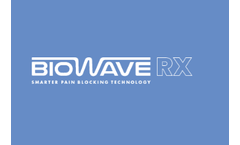In Vivo Studies Articles & Analysis: Older
27 articles found
Understanding their intricate interplay is essential for determining the efficacy and safety of therapeutic compounds. When studied in living organisms, this relationship is referred to as in vivo PK/PD, a discipline that provides invaluable insights into drug behavior within a biological context. ...
They bridge the gap between simple in vitro tests and complex in vivo studies. By integrating data from multiple ion channel assays and leveraging computational modeling, translational assays offer a comprehensive view of a compound’s electrophysiological impact on the heart. ...
Assessing these properties during drug development can help identify suitable candidates and optimize formulations. The Importance of In Vitro Studies In vitro studies offer a controlled environment to assess drug permeability without the ethical and complexity concerns associated with in vivo studies. ...
Cell cultures have played a significant role in the academy and pharmaceutical industry, but conventional 2D cultures fail to provide physiological relevance and communication network as compared to in vivo conditions, since they are unable to mimic the complexity of cellular microenvironment, an essential part for the cell behavior and systematic investigation. ...
Furthermore, the nanoformulation platform includes in vitro and in vivo testing capabilities to evaluate the efficacy, safety, and stability of the nanoformulations. In vitro studies involve using cell cultures to test the drug release and cytotoxicity, while in vivo studies involve animal models to assess the biodistribution, ...
Furthermore, their ability to infect both immortalized and primary cells significantly broadens their scope of use in vitro and in vivo studies. Concept of Reporter Lentiviral Particles Reporter lentiviral particles carry the technology a step further by including a reporter gene in the viral vector. ...
This sophisticated tool is widely utilized, offering a remodeled panorama in advanced therapeutic development, pharmacological studies, and the robust field of proteomic research. Inducible Expression Stable Cell Lines: An Overview Inducible Expression Stable Cell Lines facilitate the controlled expression of a specific gene, thereby enabling scientists to intricately ...
Rational Vaccines said findings from a pilot study showed that RVX201 led to a reduction in recurrent genital lesions when compared to gD2-alum/MPL vaccine in animal studies. ...
Programs in our pre-clinical oncology portfolio, for example, have advanced from initial hit to in vivo studies in a matter of months. Partners can add tremendous value and help validate the technology early in its lifecycle. ...
This allows researchers to see which genes are lost and determine the resistance mechanisms used by solid tumors to evade CAR-T cell therapy. In this study, they applied selective pressure with CAR to each barcoded cell on the screen. ...
What is diabetic neuropathy? The most common complication of diabetes is neuropathy, which is nerve damagecaused by high blood sugar. Most neuropathy affects the legs, hands and feet and usually presents as numbness, pain or tingling. Diabetic neuropathy can also seriously impact the heart, blood vessels, digestive system and the kidneys. Symptoms can range from mild discomfort to extreme pain. ...
We have demonstrated the suitability of this bone graft substitute both in in-vitro and in-vivo models. In the in-vitro model, rhBMP-2 release was sustained for 28 days. In the in-vivo animal studies, the bone graft substitute showed both osteoinductive potential with ectopic bone formation in a rat muscle pouch, as well as osteogenic potential ...
For the first time, enhanced PTGDS expression in DLBCL was found to be associated with poor treatment outcome and poor prognosis. In addition, in vitro, and in vivo studies showed that PTGDS inhibition markedly inhibited the progression of DLBCL through myh9-mediated Wnt β-catenin STAT3 signaling pathway. ...
Now, we are extending our industrialized approach to petabytes of pre-clinical in vivo studies. Digitalizing in vivo studies could further speed up our science by reducing the time needed to gather and act on insights, increasing the precision of studies, and improving translatability to clinical outcomes. ...
Both current in vitro and in vivo models used in the development of candidate therapies for the treatment of intestinal diseases have severe limitations. ...
Prediction of the first-in-human dosing regimens is a critical step in drug development and requires accurate quantitation of drug distribution. Traditional in vivo studies used to characterize clinical candidate’s volume of distribution are error-prone, time and cost intensive and lack reproducibility in clinical settings. ...
While animal models possess system complexity, it is frequently difficult to modulate and control the desired experimental parameters in in vivo studies. Additionally, the intestinal systems and diets of most animals differ dramatically from those of humans. ...
Due to a lack of robust in vivo gut models, animal studies are generally required to evaluate gut toxicity. ...
An innovative information platform to capture, integrate, manage and analyse in vivo experimental data in a much more coherent fashion was commissioned and deployed. ...
While in vitro testing methods have been developed to screen chemicals for endocrine disruption, extrapolation of in vitro response to in vivo action shows inconsistent accuracy. We describe here our tissue co‐culture of the fathead minnow (Pimephales promelas) HPG axis and liver (HPG‐L) as a tissue explant model that mimics in vivo results. Brain (hypothalamus), ...













